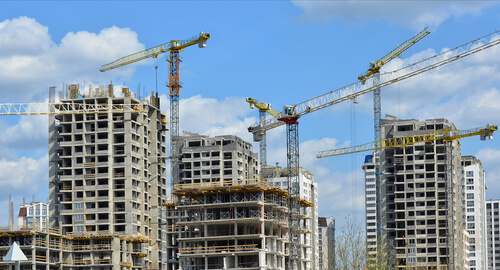First Remediation Contribution Order granted by the First-Tier Tribunal

First Remediation Contribution Order granted by the First-Tier Tribunal
The first remediation Contribution Order has made by the First Tier Tribunal (FTT) under the Building Safety Act 2022 in connection with the remediation of building safety defects at a high-rise residential block in London.
Remediation orders – what does the BSA say?
A remediation order is an order that the party with responsibility for repair of the external façade must undertake repairs. Section 123 of the Building Safety Act 2022 (BSA) provides for the granting of Remediation Orders on the application of an interested person requiring a relevant landlord, to remedy specified relevant defects, in a relevant building by a specified time.
S120 of the BSA defines a relevant defect as a building defect that arises “as a result of anything done (or not done), or anything used (or not used) in connection with relevant works” that causes a building safety risk. Building safety risk is widely defined as a risk to the safety of people in or about the building caused by the spread of fire, or the collapse of the building or any part of it.
Relevant building is a self contained building or part of a building containing at least two dwellings which is 11 meters or more in height and has at least 5 storeys. The definition of relevant building does not include leaseholder-owned buildings.
What is a remediation contribution order?
A remediation contribution order is a new type of order introduced by the BSA, which allows the FTT to make an order relating to the funding of remedial works in respect of defects that cause a building safety risk, where it is considered “just and equitable” to do so.
This new type of order, coupled with Remediation Orders, form part of the “leaseholder protections” established by the BSA. These are aimed at protecting leaseholders in multi-occupied residential buildings from the costs associated with remediating historical building safety defects.
What does “just and equitable” mean?
The BSA does not provide a definition of just and equitable so its meaning will be a question of judicial interpretation. The BSA explanatory notes indicate that the test is “intended to ensure fairness in proceedings while given the Tribunal a wide decision-making remit” within which it may take all appropriate factors into account, including “wider public interest in securing the safety of buildings” when determining whether an order should be made.
Background to the application and the decision of the FTT
The application
The application was made on behalf of 18 leaseholders of Sutton Court, successfully meeting the criteria of a “relevant building”.
The first respondent was the freeholder, an SPV set up to develop Sutton Court. The intention was that the SPV would sell on the freehold but this never happened. In or around 2020, defects were identified which required the replacement of unsafe cladding and render on part of the facades, and rectification and replacement of balconies that were deemed unsafe or a fire safety hazard.
The freeholder served notices on the leaseholders under Section 20 of the Landlord and Tenant Act 1985. After the works were completed, the invoices were paid by the leaseholders.
The application for a remediation contribution order was made on the basis that:
- Service charge payments were made for the remediation of relevant defects and the leaseholders sought to have these payments returned,
- The service charge costs fell within the provisions of Schedule 8 of the BSA, and
- That it was just and equitable to make a remediation contribution order.
The decision
The FTT made a remediation contribution order against the freeholder and ordered them pay £194,680 to the leaseholders. The FTT found that;
- The costs that the lessees sought to recover in respect of the remediation of external defects and balconies related to ‘relevant defects’,
- The balconies constituted a ‘building safety risk’ within the meaning of S120(5) of the BSA
In order to satisfy the just and equitable test, the FTT needed to be satisfied that the lessees paid for the cost of works which ought to have been funded by the freeholder. Paragraph 2 of Schedule 8 of the BSA provides that service charge is not payable in respect of a relevant defect which a relevant landlord is responsible for, and accordingly, since the freeholder was the developer and the landlord at the qualifying time, and was responsible for the defect, the costs were “not to be regarded as relevant costs to be taken into account” in calculating service charge.
Contact our Real Estate Dispute Resolution team today
If you would like to discuss any issue relating to this blog, please do not hesitate to contact a member of the Real Estate Dispute Resolution Team on 01895 201759 or contact us via the enquiry form at the top of our Property Disputes page.
